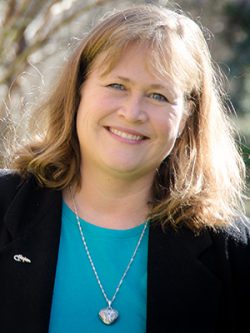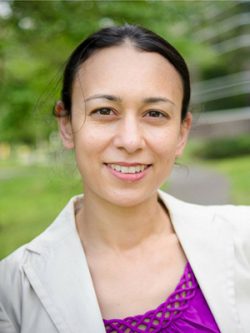faculty
Primary Faculty / Affiliate Faculty / Emeritus and retired Faculty
Primary Faculty

My research is in the area of molecular and cellular bioengineering. We apply our expertise in cellular and protein engineering to develop novel strategies to diagnose, target and fight disease.
“DESIGNER” PROTEIN-MODIFYING ENZYMES FOR BIOMEDICINE, BIOTECHNOLOGY AND SYNTHETIC BIOLOGY
Enzymes that catalyze site-specific protein modifications play vital roles in regulating cellular processes. Understanding their substrate specificity not only provides insight into their physiological mechanisms but also enables their selective targeting to remediate disease states.…

OUR RESEARCH IS IN THE AREA OF MOLECULAR/CELLULAR bioengineering. We apply engineering principles to study the behavior of living cells or other small-scale biological systems. Using a combination of engineering modeling/analysis, quantitative experimentation, together with the tools of molecular cell biology, we seek to better understand the relationship between cell function and the physical and molecular properties of cells and their environment.…

MY RESEARCH GROUP IS GENERATING INSIGHTS AND SOLUTIONS TO problems with genome engineering, specifically CRISPR/Cas systems. Over the past few years, the slow-progressing field of genome engineering has been transformed by the breakthrough of Clustered Regularly Interspaced Short Palindromic Repeats (CRISPR) with astronomical applications in science, medicine, agriculture, biotechnology, and biomanufacturing. Originally derived from the bacterial immune system, the CRISPR/Cas9 technology works by introducing two components inside cells, a Cas9 nuclease that acts like molecular scissors and a guide RNA (sgRNA) that binds with Cas9 and directs the complex to the target DNA to create double-stranded cuts in the DNA.…

MY RESEARCH GROUP SEEKS TO PROVIDE INSIGHTS AND SOLUTIONS IN THE FIELD OF SUPRAMOLECULAR BIOMATERIALS. We are aiming at engineering structural and functional properties of supramolecular biomaterials for target applications including smart capsules, micro-reactors, antibacterial and/or drug release coatings. The vision of our lab is to utilize soft matter assembly and recombinant technology for the creation of advanced biomaterials.…

ELECTROCHEMICAL ENGINEERING The research performed in this group represents applications of electrochemical engineering to systems of practical importance. In recent work, electrokinetic phenomena were exploited to enhance continuous separation of water from dilute suspensions of clay associated with phosphate mining operations. The technology developed in this project is intended to greatly reduce the environmental impact of mining operations.…

HEALTH SENSORS
We aim to develop a highly sensitive and low-cost heart attack sensor technology, which can be implemented in a wireless-capable, real-time and handheld sensor for personal and medical usages. Acute myocardial infraction (AMI) causes one of the highest mortality rates worldwide. The existing methods employed by first responders, hospitals and clinics are time consuming and require trained personnel to perform tests.…

MY GROUP STUDIES THE BEHAVIOR AND BIOMEDICAL APPLICATIONS OF MAGNETIC NANOPARTICLES. We combine expertise in synthesis and surface modification of magnetic nanoparticles, physical, chemical, and magnetic characterization, and modelling to understand the colloidal behavior of magnetic nanoparticles, their interaction with biological entities, and to advance their biomedical applications. We are actively investigating novel methods of synthesizing nanoparticles with tailored magnetic properties, evaluating nanoparticle stability and mobility in biological environments, and advancing applications of magnetic nanoparticles in cancer therapy and magnetic particle imaging.…

WE STUDY POLYMERS, PROTEINS, AND THEIR HYBRIDS TO DESIGN THE NEXT GENERATION OF SOFT MATERIALS using molecular dynamics simulations, high throughout computations, and enhanced sampling methods. To sustain materials discovery in the future given the limited resources at our disposal, predictive engineering techniques must be employed to allow for efficient design and optimization of materials.…

Our research team is focused on the design and optimization of natural biomaterials for a variety of clinical applications. Experimental research explores the mechanical and transport properties of elastic and viscoelastic materials, aiming to determine a predictive set of material characteristics that have a known function in the body. We aim to harness the power of the immune system in tissue regeneration to alter the way that these materials integrate following implantation, providing a new strategy for optimizing materials for clinical applications.…

Current research, in collaboration with Professor Pratap Pullammanappallil of the UF Agricultural and Biological Engineering Department, focuses on the modeling and optimization of bioprocesses for the production of biofuels and other useful products of bioprocesses. Of particular interest is a remarkable cyanobacterium, isolated by Professor Edward J. Phlips of the UF School of Forest Resources and Conservation, that with CO2-enriched air produces high concentration of cells and of an extracellular polysaccharide without needing fresh water or external addition of nitrogenous nutrients. …
Affiliate Faculty
Emeritus and Retired Faculty
No results.


